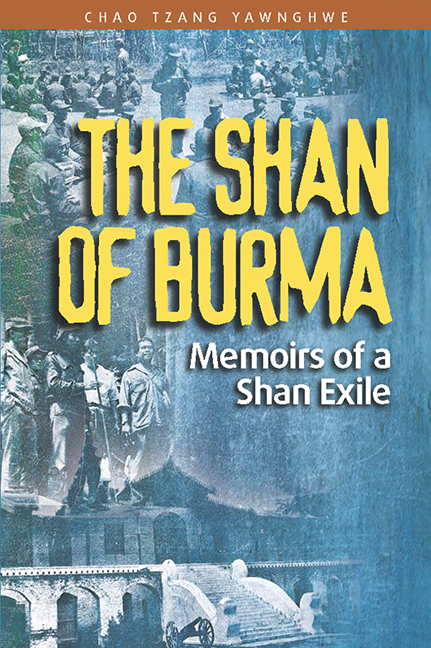Book contents
- Frontmatter
- Contents
- Foreword
- In Memorium
- Preface
- Acknowledgements
- PART ONE AN AUTOBIOGRAPHICAL INTRODUCTION
- PART TWO SHAN-BURMESE RELATIONS
- 2 An Overview of Shan-Burmese Relations
- 3 The Development of Shan-Burmese Relations
- 4 Shan-Burmese Relations from 1948
- PART THREE WHO'S WHO IN SHAN STATE POLITICS
- APPENDICES
- Abbreviations
- Glossary
- Bibliography
- Index
- The Author
4 - Shan-Burmese Relations from 1948
from PART TWO - SHAN-BURMESE RELATIONS
Published online by Cambridge University Press: 21 October 2015
- Frontmatter
- Contents
- Foreword
- In Memorium
- Preface
- Acknowledgements
- PART ONE AN AUTOBIOGRAPHICAL INTRODUCTION
- PART TWO SHAN-BURMESE RELATIONS
- 2 An Overview of Shan-Burmese Relations
- 3 The Development of Shan-Burmese Relations
- 4 Shan-Burmese Relations from 1948
- PART THREE WHO'S WHO IN SHAN STATE POLITICS
- APPENDICES
- Abbreviations
- Glossary
- Bibliography
- Index
- The Author
Summary
The Spirit of Panglong and the Union
There is a Burmese saying, “A bad beginning makes for an uncertain ending”, and this certainly applies to the creation of a new nation-state in 1948 — the Union of Burma.
The one significant factor which overshadowed everything else was the fact that neither the British nor the Burmese nationalists (whose burning ambition it was) were prepared for the swift unravelling of British power. The Shan and the Frontier peoples were even less prepared, since under British rule they had — except for a few individuals — almost no contact with the outside world.
The Japanese war changed all that overnight, and the need by both the Japanese and the Allied Forces for native support and the subsequent barrage of propaganda, awakened in the Shan and Frontier peoples an awareness of such things as love for one's homeland, the duty to repel foreign occupiers and aggressors, and to stand for one's rights.
During the war, the Burmese nationalists sided with the Japanese while most of the Frontier peoples sided with or secretly sympathized with the British, and thus, with their return to Burma, the leaders of the non-Burmese ethnic groups, especially the Karen, naturally expected some favourable considerables from Britain regarding their future. Instead, the British began establishing relations with the Thakins, whilst pointedly ignoring the people who had fought for them as regular soldiers or as guerillas behind Japanese lines.
The Shan were particularly dismayed by the Simla Plan since it further reduced, in the name of democratization, the status of the chaofa to that of non-princely native tax-collectors. This, in effect, further lowered the political status of the Shan states from that of a sub-province (as in the 1922 federation) to that of a tribal area under direct bureaucratic rule. It, however, would not have been too bad if there were British guarantees regarding the future position of the Shan states whatever the status of the chaofa, but this was not forthcoming.
- Type
- Chapter
- Information
- The Shan of BurmaMemoirs of a Shan Exile, pp. 91 - 142Publisher: ISEAS–Yusof Ishak InstitutePrint publication year: 2010

